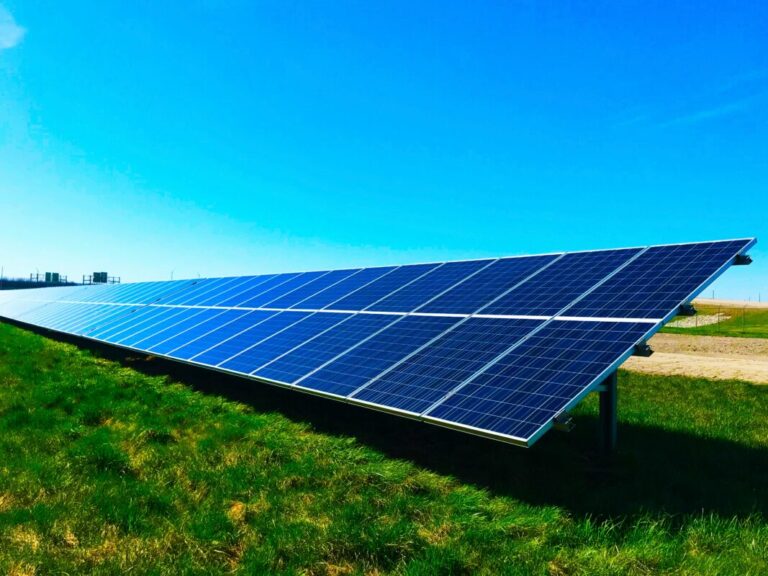Latest
Features , Interviews , Long Reads
“With renewable-powered production and transparent sourcing, we can offer wafers that attract a green premium,” said Hurll. Image: Unsplash.
Building an end-to-end solar manufacturing supply chain has become a “strategic imperative” for Australia, Stellar PV CEO Louise Hurll told PV Tech, describing it as a “transformational opportunity” for the nation to evolve from a consumer of clean energy technology into a global supplier.
In an interview for PV Tech Premium, Hurll said Australia’s heavy reliance on imports – particularly from China, which produces over 90% of the world’s polysilicon and 98% of its wafers – exposes its renewable energy ambitions to global supply disruptions.
This article requires Premium Subscription Basic (FREE) Subscription
Already a subscriber? Sign In
Try Premium for just $1
Full premium access for the first month at only $1
Converts to an annual rate after 30 days unless cancelled
Cancel anytime during the trial period
Premium Benefits
Expert industry analysis and interviews
Digital access to PV Tech Power journal
Exclusive event discounts
Or continue reading this article for free
“We ship our quartz overseas to be processed, and by the time it returns as finished panels, its value has multiplied many times over,” she said. “With abundant renewable energy, strong ESG standards, and world-class research, Australia can capture that value at home.”
Hurll emphasised that the government’s AU$1 billion (US$653 million) Solar Sunshot Programme, administered by Australian Renewable Energy Agency (ARENA), is essential to establishing domestic production. Stellar PV received AU$4.7 million in ARENA funding for feasibility and front-end engineering studies, which Hurll described as “a huge jump start” that has helped attract private investors by demonstrating government commitment.
“Private investment alone could not have brought us this far,” she noted. “Every successful solar manufacturing nation has relied on strong government support – from China’s industrial policy to the US Inflation Reduction Act (IRA). Sunshot gives Australia the same foundation to build competitive manufacturing at scale.”
Hurll said the programme marks a turning point for Australia, shifting it from a leader in solar deployment to a hub for solar manufacturing. “Australia helped pioneer modern solar cell technology, yet much of the manufacturing went offshore. Sunshot is helping to rebuild that capability.”
While technical barriers are low, the key challenges lie in establishing the industrial base and navigating long approval timelines. Hurll believes success will come from leveraging Australia’s clean energy advantage, reliable trade access to the US and Europe, and a growing global preference for traceable, low-carbon materials.
“With renewable-powered production and transparent sourcing, we can offer wafers that attract a green premium,” she said. “This is about turning Australia’s natural strengths into long-term economic leadership in the solar supply chain.”
Read our full interview with Louise Hurll (subscription required).
Read Next
US solar hardware manufacturer Create Energy and Swiss cable producer Stäubli have announced a partnership to produce a new solar connector product.
Forget any preconceptions about solar power in the Nordics; the cold, seasonally dark region is fast becoming a solar success story, writes Annelie Westén.
PV Talk: Stellar PV has been awarded government funding for its plan to open a solar ingot and wafer plant in Australia. The company’s CEO Louise Hurll tells Shreeyashi Ojha why the time is right for Australia to develop its upstream manufacturing capacity.
Recurrent Energy’s 150MW Carwarp Solar Farm in Victoria and Global Power Generation (GPG) Australia’s 200MW Glenellen Solar Farm in New South Wales have registered with AEMO’s Market Management System.
Nextracker has rebranded itself as ‘Nextpower’ to reflect what the company said was its evolution from solar tracker supplier to a “full-platform” provider of integrated energy solutions.
PV Talk: Stefano N. Granata of STS discusses the growing momentum behind back contact cell technology as manufacturers and investors embrace higher-efficiency solutions.
Most Read
Upcoming Events
https://www.pv-tech.org/sunshot-programme-could-reshape-australia-from-a-solar-consumer-to-a-manufacturing-hub/





